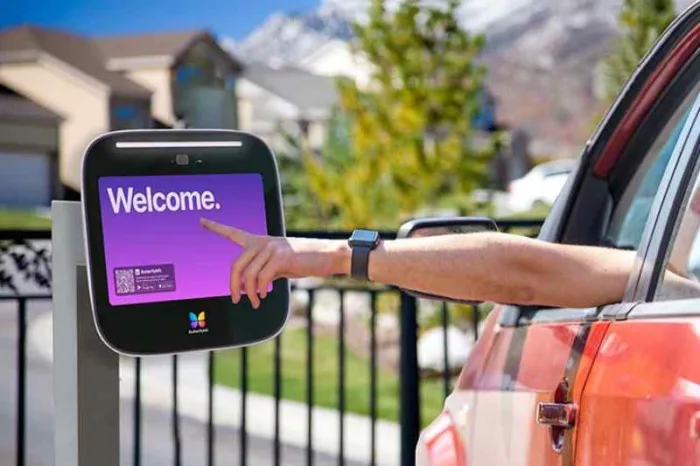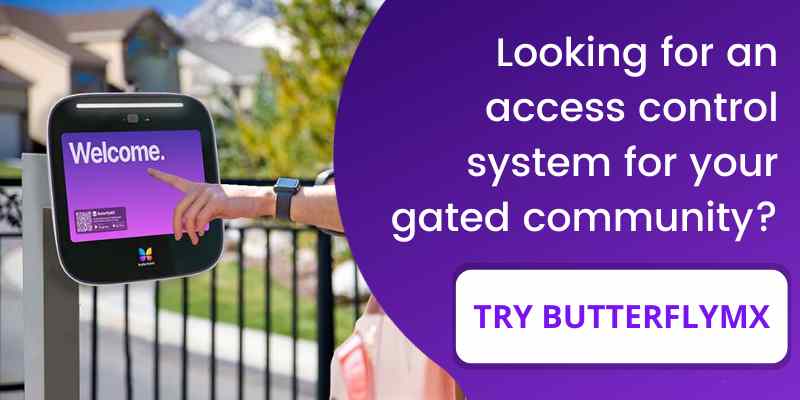Key takeaways
- Gate access control systems are essential for managing entry at gated properties, ensuring authorized personnel can enter while maintaining security.
- There are many different types of gate access, such as video intercoms, vehicle detection, and telephone entry systems.
- You’ll improve tenant satisfaction, property security, and the management process by installing a gate access control system.
- When choosing an access control gate, consider wiring, weatherproofing, remote management, and supported credentials.
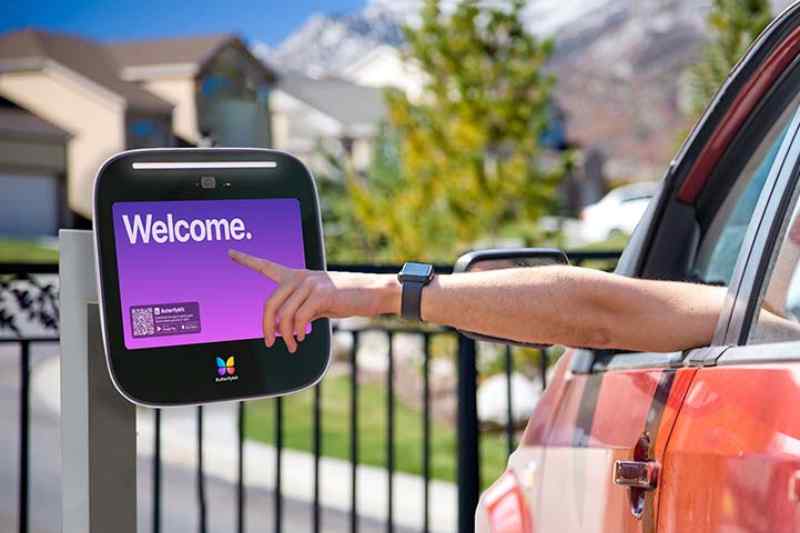
Gate access control helps maintain security for all gated properties, from multifamily housing to commercial office buildings. But when gate access is necessary, it’s also important the right people can enter without being hindered.
For that reason, we’ve created this guide to help you bolster your gated community with a gate intercom system or another type of entry method. We’ll cover how these systems work, the types of access control systems, and the benefits of gate security. Most importantly, we tell you everything there is to know about the top gate access control systems on the market.
In this post, we explain:
- 4 best gate entry systems
- What is a gate security system?
- How gate gate entry systems work
- Benefits of security gate access control
- Best use cases for access control gates
- Types of gate access systems
- How to choose a gate access control system
- Gate entry system FAQs
4 best gate access control systems
Here’s a round-up of the best access control systems for gates:
Watch how ButterflyMX’s gate access control system works:
1. ButterflyMX
No matter your gate’s location or access requirements, the right access control system is ButterflyMX.
Established in 2014, ButterflyMX is a cloud-based access control company that’s been installed at more than 15,000 properties and garnered over 40,000 five-star reviews.
We make it easy for operators and owners to manage their properties through an easy-to-use interface that’s accessible via phone or desktop. Meanwhile, we simplify access for employees, tenants, guests, delivery drivers, and service workers.
ButterflyMX offers multiple solutions ideal for controlling access at gates:
- Video Intercom. Our flagship product, the Video Intercom, lets you easily manage access for everyone. This device is available in 8” and 12” models that can withstand all types of weather conditions while enhancing the look of your property. Our Video Intercom enables tenants or employees to have smartphone access. Meanwhile, guests and delivery drivers can request access using the built-in directory. From there, employees or residents can see guests through the 156º wide-angle camera and speak to them before granting them access through our mobile app.
- Vehicle Access Control. Streamline gate access with our Vehicle Access Control system. This solution enables your employees or residents to enter the property without using a credential. Rather, the Vehicle Reader scans a Windshield Tag on their vehicle, granting them hands-free access to the property.
- Access Control System. Finally, consider our Access Control System to manage gate entries into your property. Our system offers a variety of readers for you to choose from that support an array of credentials, such as our mobile app, key cards, fobs, and PIN codes.
2. LiftMaster
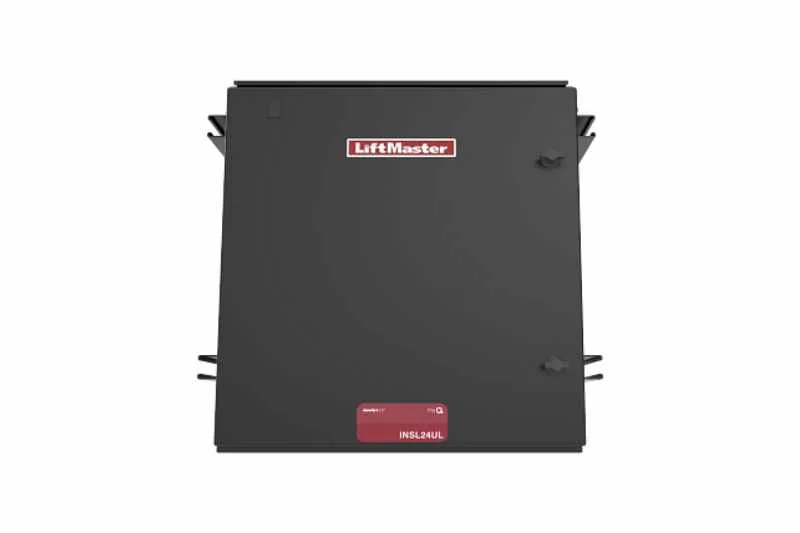
Source: LiftMaster
LiftMaster is among the list of neighborhood gate entry systems that offers reliable, long-lasting performance. Furthermore, LiftMaster gate operators feature a built-in telephone entry system for added security.
LiftMaster offers a variety of products like:
- Community security gate systems. Security gate systems with safety features like sensors and loop detectors prevent accidents and ensure proper gate operation.
- Commercial gate operators. From barrier gate operators to automated swinging and sliding gates, LiftMaster offers a variety of security gates for communities.
- Solar solutions for gates. Solar-powered gates help reduce energy consumption for residential communities.
- Heavy-duty commercial gate openers. Heavy gate operators with durable hardware and speed control are great for moving day-to-day traffic. So, they’re ideal for industrial buildings and warehouses.
3. Envera
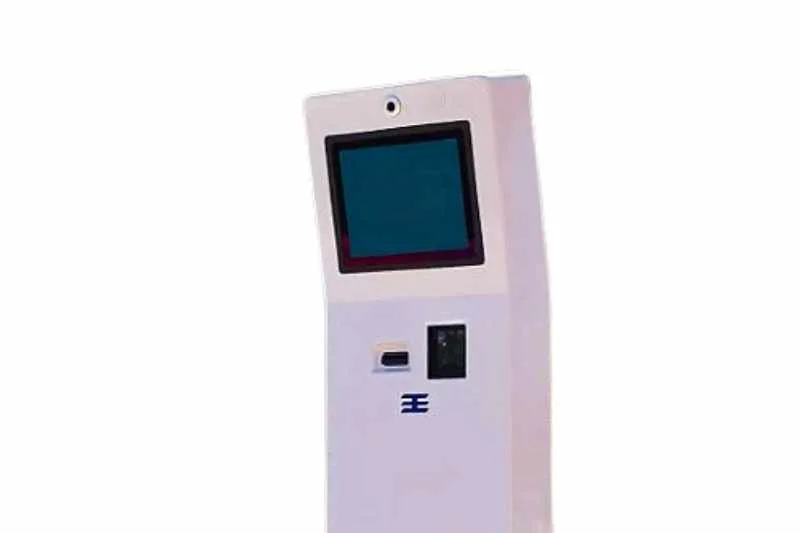
Source: Envera
Envera Systems is a gate access control provider focused on combining surveillance with remote management for gated communities. Their Virtual Gate Guard solution replaces on-site personnel with live, off-site security agents who verify visitors through video.
Envera’s offerings include:
- Virtual Gate Guard. A live, remote access control system that uses two-way audio and video to verify guests at the gate.
- License plate recognition (LPR). Envera’s gates can be equipped with LPR cameras for automated vehicle access, streamlining entry for tenants.
- Access credentials & verification. Tenants can issue temporary QR codes or phone-based credentials for visitor access, adding flexibility.
- Live video monitoring. Envera also offers live video monitoring and recording to enhance security across multiple community entry points.
4. Cellgate
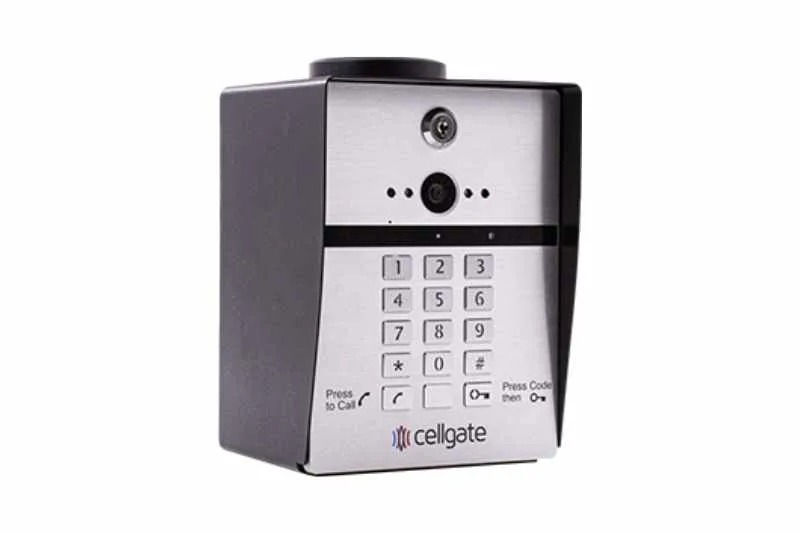
Source: Cellgate
CellGate delivers access control solutions designed for rural and commercial properties where cellular connectivity is a must. Their gate entry systems combine smart hardware with cloud management to deliver remote visibility and control, even in areas without WiFi.
Key features of CellGate products:
- Cellular-based connectivity. Systems operate on 4G LTE networks, making them ideal for locations without broadband infrastructure.
- Smartphone app control. Users can view live video, manage access, and receive entry alerts directly from the CellGate app.
- Multifamily & commercial options. With products tailored to both single-family properties and large communities, CellGate is a versatile option.
- Cloud-based management portal. Admins can review access logs, configure schedules, and manage users from any web-enabled device.
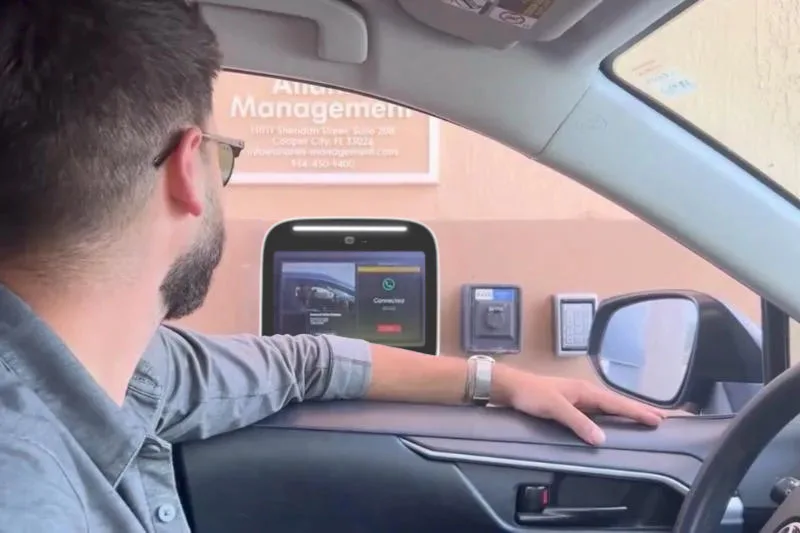
What is a gate security system?
A gate security system refers to any gate-related access control solution that manages vehicle and pedestrian access into a gated property. These security systems are found at apartment complexes, commercial warehouses, office sites, schools, and assisted living facilities.
The purpose of a gated community is to create a physical barrier between the property and the surrounding area. The gate prevents unauthorized people or vehicles from entering the property.
What’s more, a gate access control system facilitates access for authorized personnel while denying others access to the community.
Outdoor gated community access control systems with cameras are highly recommended because they allow property staff to detect unauthorized entry in real-time. And if your property experiences high volumes of traffic, you can also go back and view the security footage of a specific time to identify suspicious activities.
How gate entry systems work
There are many commercial gate entry systems, but they all work by reviewing the access credentials and then sending a signal to the security gate to open.
Anyone authorized to enter your property—like tenants and building staff—receives a credential. For vehicle gates, you could issue tenants a sticker to put on their cars. Pedestrian gate access control might use fobs, keycards, or fingerprints. When an authorized person approaches the gate, they use their credentials to prove their identity.
After scanning a credential, the access control system cross-references it with its database. If the credential matches, the system instructs the gate opener to grant access.
How do gate openers work?
A gate opener interprets signals sent by the gate access control system. When the system verifies someone’s credentials and grants them access, it sends an electronic signal to the gate opener.
There are a couple of main types of gate openers:
- Swinging arm gate opener. Mechanically pushes or pulls the gate open and closed.
- Sliding gate opener. Uses a motor and gears to push the gate to one side along a track.
Gate opening systems require a power supply. You usually connect the gate opener to your property’s power system. Some gate openers have a backup power supply — a backup battery or solar power — to remain operational even if the power goes out.
Many systems also have a safety sensor to prevent the gate from closing on objects, cars, or people. The sensor detects when there’s an object in the way and instructs the gate opener to reopen.
Benefits of security gate access control
Now that you know how gate control systems work, you might wonder whether you should invest in one. However, we believe access control is a crucial amenity for any gated property.
Here are a few reasons why you should install a security gate latch system:
- Secure your property. Controlled gate access reduces crime, prevents unauthorized visitors, and helps property staff track who’s entering and exiting your property.
- Peace of mind for your tenants. Both multifamily and commercial tenants prioritize safety. Having a gate access control system will make your tenants feel safer, which improves the tenant experience and makes them more likely to renew their leases. Controlled gate access at multifamily communities also protects children playing outside and pets escaping from the house.
- Convenience. With a gate access system, your tenants don’t have to request access from a gate attendant or staff member. Instead, they can open the gate using their credentials.
- Increase your property value. Multifamily properties secured by a gate rent and sell for more than those without a gate. In fact, one study showed that multifamily properties in gated communities are valued at approximately $30,000 higher than non-gated properties.
Best use cases for access control gates
Knowing when and where to use access control gates helps you better secure your business or community. So, below, you’ll find all the best use cases for securing gates with access control systems.
Here are the best scenarios for using access control gates:
Gated communities
Whether you manage an HOA, condo, senior living facility or student housing complex, gated access control systems are essential in providing residents with secure and convenient living experience.
Residents can easily enter the property on their own while still feeling secure, as it prevents unauthorized users from entering. However, you’ll need a system that supports easy access for guests and delivery drivers. Without such a feature, your tenants may face unnecessary inconveniences.
One of the best solutions is a cloud-based video intercom with a supported mobile app. Then, tenants can remotely grant access to visitors and delivery drivers they visually verify from their smartphones, providing security and convenience.
Garages or parking lots
Managing vehicle access to garage and parking lots requires a robust system that maintains security without hindering the flow of traffic. Not to mention, vehicle gate access can ensure the right spaces remain available for those who have permission to use them. As for parking facilities with subscription-based or hourly access, these systems can further streamline the user experience and may even help with revenue collection.
Vehicle gate access control systems come in many different forms but are invaluable for these types of properties. They are particularly useful in commercial or residential garages where high volumes of traffic can lead to security vulnerabilities, which often comes in the form of tailgating.
Gated commercial properties
Finally, gated commercial properties require security that protects employees, data, physical assets, and, of course, customers. Commercial gate access control systems are used to secure office parks, warehouses, storage facilities, and other commercial premises.
These systems can be even more effective when integrated alongside other security features, like cameras, elevator controls, and smart locks. Regardless of whether you’re managing employee access or controlling deliveries, these measures help your business maintain a secure environment for operations.
Types of gate access control systems
We’ve covered the importance of controlling access at gated entrances, but now you must choose an access control system for your gate. Fortunately, you have a few options to suit your property’s unique needs.
The most common types of gate access control systems are:
RFID gate access control systems
RFID stands for “radio-frequency identification.” It’s a technology that uses a scanner to read data stored within an RFID tag via radio waves. This technology is frequently used in access control systems.
Most RFID access control systems use keycards or fobs. Each tenant receives one of these registered devices, which they use to gain property access. An RFID access control system has a database of every card or fob registered. When someone scans their fob at the gate, the system checks to see if it is registered. If it is, the system grants access and opens the gate.
RFID systems effectively restrict access to unauthorized people. However, the downside to using RFID gate access control is keeping track of the physical devices needed to grant access.
First, tenants must always have a card or fob with them. If they forget or lose the device, they lose property access. Second, property staff has to purchase, issue, and keep track of all those devices. If a tenant loses their fob, staff must go through the trouble of reissuing a new one.
Keypads
Keypads are among the most simplistic access control systems for gates. Rather than using a physical device to request property access, tenants use a designated code or PIN. They enter that PIN on your keypad device, which checks its database to see if that PIN code is registered. If the code is valid, your system opens the gate.
Keypad gate access control systems can save time and money for property staff, who won’t have to issue physical fobs or cards to every tenant. However, tenants may forget their PIN. And unless the keypad also pairs with a mobile app for smartphone-based access, there’s no backup entry method.
Plus, keypads are often small and may be difficult for tenants to use from their vehicles. As such, they may be better for pedestrian gate access control. On top of that, keypads don’t offer a way for visitors to request access from tenants.
Vehicle detection systems
Vehicle detection systems can control access at gated driveways, parking garages, and other car entry points. When installed at vehicle access control gates, vehicle detection systems ensure that only authorized cars can enter your property.
There are a few different vehicle detection systems:
- Vehicle readers and windshield tags. Vehicle readers and windshield tags enable automatic, hands-free access to tenants at your property. To accomplish this, all tenants have to do is adhere the windshield tag to their vehicle for automatic access. What’s more, ButterflyMX windshield tags automatically degrade once they’re removed. So, you won’t have to worry about tenants sharing their windshield tags with unauthorized vehicles.
- Placing a proximity card inside each vehicle. Register proximity cards with the detection system and put one in each tenant’s car. When the system’s sensor recognizes a proximity card, it triggers the gate to open.
- Automatic Number-Plate Recognition (ANPR). License plate recognition uses optical character recognition to scan each vehicle’s license plate. If the plate matches one registered with the ANPR system, the gate opens.
Pro tip: If a vehicle gate access control system is too expensive for your gated community, you can use an access system that’s connected to your residents’ smartphones. This way, they can quickly enter your community and reduce wait times at the entry gate.
Better yet, pairing a smartphone entry system with your vehicle gate access control solution can ensure robust and seamless access for everyone at your property.
Cell phone gate access systems
Cellular gate entry systems let your tenants open your gate with a cell phone. Moreover, most cell phone gate access systems rely on Bluetooth.
Here’s how a Bluetooth cell phone gate entry system works:
- Install a Bluetooth access control reader at your gate.
- Tenants download the system’s mobile app to their smartphones.
- When a tenant approaches your gate, they tap a button in the mobile app to open your gate.
The main drawback to using a Bluetooth gate access control system is that your tenant’s device must be close enough to the reader for the signal to reach (typically within 30 feet). That means tenants can’t open your gate for guests or service providers when they aren’t home.
If you’re interested in a smartphone gate opener, choose a gate intercom system instead. That way, tenants can open your gate from their cell phones no matter where they are. They’ll enjoy the completely keyless entry experience.

How to choose a gate access control system
With so many types of gate access control, how do you choose the best one for your gated property?
Here is what you need to consider when choosing a gate access control system:
Wired vs. wireless
A gate access control system can be wired or wireless. Most property owners and managers find wireless gate security systems easier and more affordable to install.
Moreover, many entry gates are located hundreds or even thousands of feet away from the property to which they control access. As a result, installing a wired access control system requires an equally large amount of wiring to connect the hardware at the gate to the system’s control panel. In contrast, a wireless gate access system can operate without that physical wiring. So, you’ll save time and money by going wireless.
Weatherproofing
In most cases, your gate access control system will have hardware exposed to the elements. So, your system should be designed to withstand extreme temperatures, humidity, dust, and all types of precipitation. In addition to these qualities, consider a vandal- or tamper-resistant design to prevent bad actors from manipulating the system for their own benefit.
With these qualities, your gate access control solution will save you time, money, and hassle long after installation.
Remote management
The best gate access control systems are cloud-based, meaning you can manage them remotely. You don’t have to set foot on the property to review entry logs, manage permissions, or grant access. Instead, all you have to do is log into a mobile app or desktop to manage your system from a cloud-based OS.
In turn, you can manage multiple properties from the same place or enable a remote management team to oversee operations. Regardless of how you use it, remote management is vital in handling a large real estate portfolio that requires your attention.
Integrations
A gate access system will likely not be your only security feature. So, it’s best to find a system that integrates with other hardware and software for a centralized experience. Integrated security measures create a unified solution that is more effective and easier to manage. As a result, your system is better at thwarting potential security risks and streamlining your workflows.
Gate entry system FAQs
- How many types of gate control are there?
- How do gates work in gated communities?
- Can you open a gate with your phone?
How many types of gate control are there?
There are several types of fate control out there, such as card readers, biometric systems, mobile apps, telephone entry systems, and even keypad entry systems. To determine which system is right for your gated property, consult a security installer or integrator.
How do gates work in gated communities?
It depends on the gated community. Some have a gate intercom system used by residents and guests. Residents type in a unique code to grant themselves access, whereas guests will request access by calling the residents they’re visiting by typing in their phone number on the intercom.
On the other hand, some gated communities use guards, gatehouses, or guard houses to manage who can enter the community. When a car approaches the gatehouse, the guard verifies the identity of the driver before letting them inside. For guests, the guard will call the resident that the guest says they are visiting to verify they’re okay to let inside.
As you can see, there are many ways for gates to work in gated communities. But above all, you must find a solution that best works for your community.
Can you open a gate with your phone?
Yes, if the gate security system is mobile-based, remote gate access control is possible, and you can open the gate with your cell phone. Most modern systems come with mobile apps for tenants to download. Once the app is installed, tenants can enjoy multiple ways to open the gate on their smartphones.
Most common ways to grant access from a mobile phone:
- Swipe to open
- Scan a QR code
- 3D or haptic touch
- Input a PIN code
Opening the gate with Alexa or Siri
Some gate access control systems let you open the gate with any Alexa- or Siri-enabled device. Voice commands are a simple, hands-free way to open the gate.
And this method is especially beneficial for those entering the gated community in vehicles — they can keep their hands safely on the steering wheel and eyes on the road.

Learn more about ButterflyMX
Fill in the form below, and we'll email you right back.
Have questions?
Fill in the form below, and we'll email you right back.
